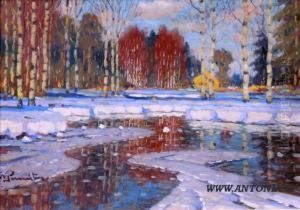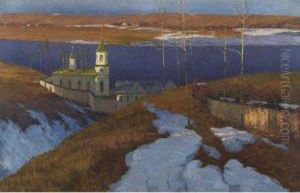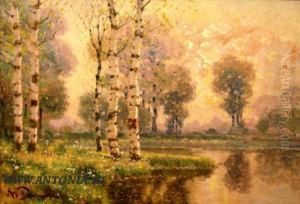Vilhelms Purvits Paintings
Vilhelms Purvītis was a prominent Latvian painter and art educator, known for his significant contributions to the development of Latvian national art at the turn of the 20th century. He was born on March 3, 1872, in Zaube parish, which is now part of the Amata municipality in Latvia. Purvītis was one of the first professionally educated Latvian painters, and his work was influential in shaping the Latvian national romanticism movement.
In his early years, Purvītis studied at the Riga City Art School before moving on to the St. Petersburg Academy of Arts, where he was a student from 1890 to 1897. During his time at the academy, he was awarded several scholarships that allowed him to travel and further his studies. He spent time in France, Germany, and Italy, where he was exposed to various art movements and techniques that would later influence his work.
Upon returning to Latvia, Purvītis became a central figure in the Latvian art scene. He helped to establish the Riga Art Society and became a professor at the Riga Polytechnical Institute. In 1919, he played a crucial role in founding the Latvian Academy of Art and became its first rector, a position he held until his death. His educational work contributed to the training of a new generation of Latvian artists.
Purvītis's artistic style was characterized by his use of light and his ability to capture the Latvian landscape with a lyrical and romantic sensibility. His paintings often depicted the beauty of Latvia's forests, rivers, and seasons, and he is particularly well-known for his winter landscapes, which convey a sense of serenity and majestic solitude. Purvītis's work was instrumental in establishing a national identity for Latvian art and is still highly regarded today.
Throughout his career, Vilhelms Purvītis received numerous awards and honors, both in Latvia and abroad. He was active in promoting Latvian art and participated in various international exhibitions. Purvītis passed away on January 14, 1945, in Bad Nauheim, Germany. His legacy lives on through his paintings, his influence on Latvian art education, and the Vilhelms Purvītis Prize, which is awarded biennially to recognize significant achievements in Latvian visual arts.


